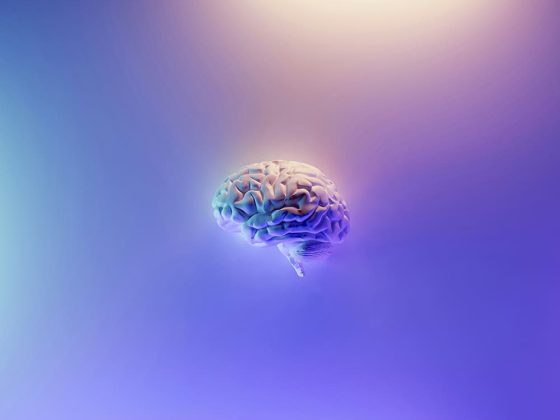A healthy brain is a marvel of complexity, but Alzheimer’s disease disrupts this intricate system. This guide delves into the key structural and functional differences between an Alzheimer’s-affected brain and a healthy one, exploring the role of plaques, tangles, and their impact on memory and cognitive function.

Christopher Ravn
Key Takeaways
1.
2.
3.
Table of Contents
1. Alzheimer’s Brain Vs. Normal Or Healthy Brain
2. What Are The Main Characteristics Of The Brain With Alzheimer’s?
3. What Happens To The Brain In Alzheimer’s Disease?
4. What Is The Difference Between An Aging Brain And A Normal Brain?
5. How Is Alzheimer's Disease Different From Most Other Mental Illnesses?
6. Frequently Asked Questions About Alzheimer's Brain Vs. Normal Brain
Alzheimer’s Brain Vs. Normal Or Healthy Brain
A normal brain has a chemical called amyloid precursor protein (APP). In Alzheimer’s Disease, the brain starts going through a change where the APP protein turns into beta-amyloid. However, the brain cannot clear this, and the hippocampus, which is tied to memory, and other areas linked to language, judgment, and behaviors starts to get affected. This process is known as brain atrophy.
A healthy brain does not have the presence of amyloid plaques and neurofibrillary tangles. Amyloid plaques can be found in tissue regions between nerve cells with the presence of beta-amyloid protein. On the other hand, twisted tangles, such as neurofibrillary tangles, are found within neurons, which are made up of tau protein. Tau helps a healthy brain maintain its structures and functions. However, for an Alzheimer’s patient, abnormal tau forms tangles and messes up the neuronal function, resulting in cell death.
The presence of amyloid plaques and neurofibrillary tangles can lead to cognitive decline in areas such as language, judgment, and behaviors. It also disrupts synaptic communication and leads to cell death in the brain.
What Are The Main Characteristics Of The Brain With Alzheimer’s?
A healthy brain has tau proteins, which help to maintain the integrity of microtubules. It helps transport the necessary material throughout the cells in the brain. However, neurofibrillary tangles (NFT) take place when the tau protein has an abnormal accumulation inside the neuron.
It impacts the neurons as it starts to accumulate and disrupt the normal function of the microtubules. This in turn impedes the transport system of the neurons, impairing communication between neurons thus, causing the cells to die.
The role of amyloid plaques and neurofibrillary tangles in Alzheimer’s disease can be understood as follows; when amyloid plaques are detected in the tissue between neurons, it leads to the death of neurons around the area. Moreover, as stated, NFTS are composed of tau proteins and are known to disrupt the function of microtubules. The accumulation of both these proteins is said to be the main factor that contributes to Alzheimer’s. It is still unknown how the proteins contribute to the disease but research suggests they may disrupt normal cellular processes which leads to Alzheimer’s Disease. (Yang, et al., 2023)
What Happens To The Brain In Alzheimer’s Disease?
In Alzheimer’s Disease the brain goes through a process where amyloid plaques and NFTs cause the neurons to degenerate. The network of neurons starts to break down and certain parts of the brain start to shrink due to injury or because the neurons may stop working.
As the disease continues to accelerate, parts of the brain that are responsible for the production of neurotransmitters start to fade out and die. This loss is one of the features of Alzheimer’s Disease and it is believed to be a contributing factor to cognitive and motor decline. Another piece of evidence is the discovery of amyloid due to mutations in APP, PS1, PS2, and APOE e4 amyloid accumulation, which may contribute to the death of neurons. Another factor is due to toxic RNA strands. However, it is still not clear as to how this causes degeneration to the brain but its discovery and research may eventually provide insights. There have been some cases where there were early signs of Alzheimer’s in 50s.
As the brain reaches the final stages of Alzheimer’s Disease, it has gone through massive degeneration and atrophy, resulting in a loss of brain volume. This causes the brain to have cognitive and motor issues, causing the patient to struggle with daily living.
Loss Of Neuronal Connections
- Neurons are unable to communicate with one another, which leads to the brain not being able to understand or process information.
- The connections between neurons start to weaken and the part of the brain that retrieves memory starts to deteriorate. This causes memory loss.
- As the neurons start to weaken, patients struggle with learning, attention, and problem-solving
- Motor areas start losing neuron connections, causing issues with motor functions such as balance, coordination, and movement.
- Moods start to get affected and it can be seen in the changes in motivation and behavior.
- As more neurons start to deteriorate, the brain goes through atrophy, which causes a decrease in brain volume and cells.
Chronic Inflammation
Inflammation is an indicator that the brain has gone through an injury or infection. Hence, when it comes to chronic inflammation, it is known to be a key indicator of Alzheimer’s Disease. Due to the inflammation, immune cells such as microglia and astrocytes go through activation. This process attracts the immune cells to the affected area, thus causing the area to be chronically inflamed. This causes the brain tissue to degenerate because of the accumulation of amyloid-β plaques and NFTs which causes Alzheimer’s.
The consensus indicates that chronic inflammation is the main reason for Alzheimer’s Disease due to the increase of protein amyloid-β, the release of pro-inflammatory cytokines, cognitive decline, memory loss, and the increase of oxidative stress, which damages the brain tissue. The consequences of chronic inflammation are cognitive decline, memory loss, and the risk of dementia and Alzheimer’s.
Overall Brain Changes
- Increase gray matter
- Lead to the maintenance of brain health and enhance neuroplasticity.
- Improved cognition due to the increase of gray matter density in the brain.
Understanding the changes the brain experiences in early childhood can also help with understanding the cumulative effects of structural and functional changes. This is when the brain goes through rapid development and maturation during the first two years of a person’s life. The neurons increase, and synapses peak in the auditory and visual sensory areas of the prefrontal cortex. Eventually, the cortical surface area expands and the surface area reaches 69% of adult values. The white matter is also highly organized in hub regions, which are also similar to adults. Thus, it is important to understand that brain exercises to prevent Alzheimer’s and training are vital for brain health and cognitive function.
How And When Do The Brain Cells Die?
Brain cells or neurons in the brain die in huge numbers when Alzheimer’s Disease comes to an end. When neurons degenerate, it leads to their death, and so does one’s memory and behavior.
Brain cells start to die around a decade or more before they start to affect cognition and memory. This is because neurons slowly degenerate and it can take place over a time frame of many years. When the disease reaches its final stages, brain atrophy is widespread, leading to the loss of brain volume and cell death.
- Glial cells cause a harmful buildup due to their malfunction, thus leading to neuron death. In a healthy brain, glial cells promote a healthy brain that is free of debris.
- Toxic RNA strands are found in the brain, which causes neuron death.
- Amyloid and tau tangles present in brain cells cause the death of neurons
Loss Of Neuronal Connections And Cell Dysfunction
- It causes disarray in the neurons, thus causing issues for them to receive or send out information. This causes degeneration of cognitive functions that affect language, memory, and attention.
- The loss of connections between neurons or loss of synapses may lead to cognitive deficits and issues with communication.
- It affects neuroplasticity and connectivity in the brain, which leads to issues with learning and memory.
- Issues with attention, focus, memory formation, and retrieval due to neuron degeneration.
- Issues in understanding and processing language due to neuron impairment.
- Impaired learning capability due to disrupted neural connections.
We Believe Prioritizing Brain Health Enhances Your Quality Of Life
Get to know our team, our mission and how our EVY LIGHT® can provide you and your loved ones with a fuller life, letting you breathe a little easier.
What Is The Difference Between An Aging Brain And A Normal Brain?
- Changes in chemical levels that affect neurotransmitters and the production of proteins lead to cognitive decline.
- As a person ages, changes in molecular and morphological features affect the volume of the brain. It is also important to know at what age does dementia start.
- The formation of amyloid beta plaques (prions) is a sign of Alzheimer’s, and if there are no prions, then it is just normal aging.
- As one enters the elderly phase, the brain goes through a decline in learning or processing information.
As for the difference in brain function, aging causes a decline in learning and processing new information. However, the brain may still be able to adapt to the changes. Comparatively to Alzheimer’s, the brain is unable to learn, process new information, or adapt to changes. This is because the brain is significantly impaired.
The comparison between normal aging and Alzheimer’s aging is that when it comes to normal aging, the brain goes through a gradual change. Still, it may be managed if there is an introduction or changes in lifestyle and cognitive training. However, when it comes to Alzheimer’s, the changes are progressively more rapid.
How Is Alzheimer's Disease Different From Most Other Mental Illnesses?
- The disease is progressive and worsens as time goes by. Hence, it is important to know how fast does mild cognitive impairment progress which is different from other mental illnesses such as depression or anxiety.
- Other mental illnesses do not have the presence of abnormal protein clumps such as amyloid plaques and NFTs in the brain.
- It affects brain functions such as thinking, memory, and language. As for other mental illnesses, it generally affects mood, memory, or cognition but does not determine a loss in brain function.
- There are effective treatments for other mental illnesses compared to Alzheimer’s Disease. To add on, the current medication may only help to manage the symptoms but is not a cure.

Brain Pathology Compared To Other Mental Illnesses
- NFTs, which gather in neurons, thus leading to cell degeneration and death.
- The accumulation of amyloid plaques in the brain causes inflammation and neuronal death.
- The connection between neurons starts to degenerate, which causes neuron impairment.
- Impaired memory and cognition are due to the production of the neurotransmitter acetylcholine.

Enhance your brain performance through the power of light.
Comfortable and easy to use 40Hz light therapy to support and improve your brain function.
View Our LightDo Plaques And Tangles Cause Alzheimer’s Disease?
Plaques and tangles are two major pathological factors that cause Alzheimer’s Disease. Both of these features are noticeable in the development of the disease but the reason behind them is still being studied. The role of amyloid plaques is to cause death in neurons and disrupt brain function. Tau protein, on the other hand, changes into a helical filament that tangles and causes neurons to degenerate. (DeTure & Dickson., 2020)
Current research and theories are unsure if amyloid plaques and neurofibrillary tangles are harmful. However, they notice that its presence causes damage to neurons, which triggers Alzheimer’s. Some studies state that this is the result of Alzheimer’s, while other theories believe that it could cause Alzheimer’s Disease. (DeTure & Dickson., 2020)
Learn What Others Have Experienced with EVY Light
See how others have achieved a sharper mind by activating their gamma brainwaves in combination with maintaining a healthy lifestyle.
Frequently Asked Questions About Alzheimer's Brain Vs. Normal Brain
How Is The Alzheimer's Brain Different From A Normal Brain?
A normal brain has a chemical called amyloid precursor protein (APP). In Alzheimer’s Disease, the brain starts going through a change where the APP protein turns into beta-amyloid. However, the brain cannot clear this, and the hippocampus, which is tied to memory, and other areas linked to language, judgment, and behaviors starts to get affected. This process is known as brain atrophy. A healthy brain does not have the presence of amyloid plaques and neurofibrillary tangles. Amyloid plaques can be found in tissue regions between nerve cells with the presence of beta-amyloid protein.
What Happens To The Brain In Alzheimer's Disease?
In Alzheimer’s Disease, the brain goes through a process where amyloid plaques and NFTs cause the neurons to degenerate. The network of neurons starts to break down and certain parts of the brain start to shrink due to injury or because the neurons may stop working.






















































